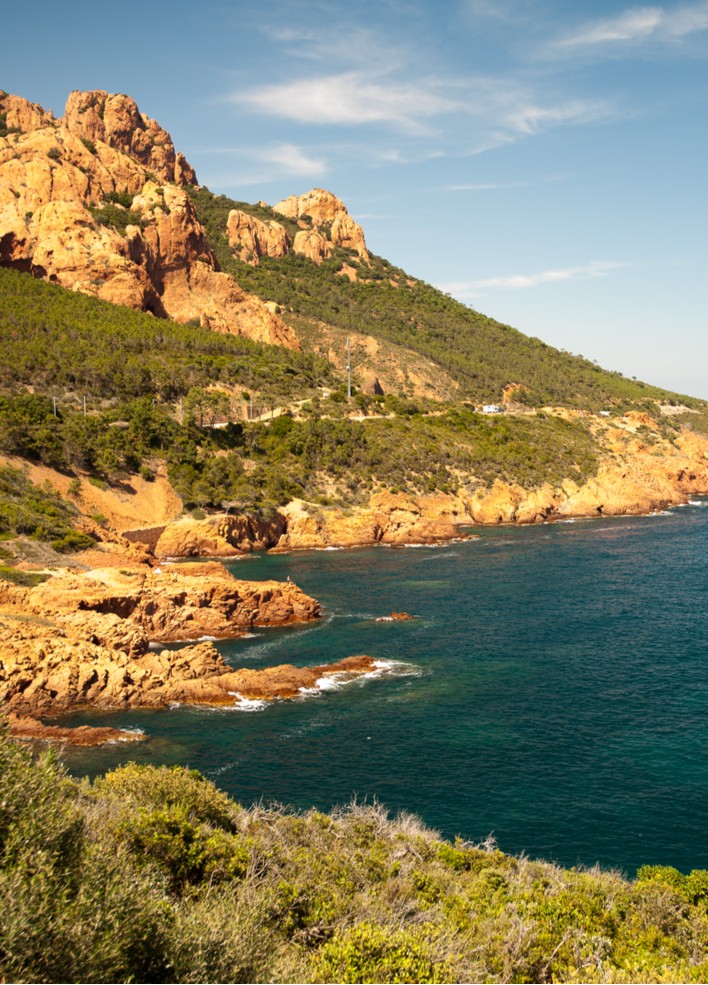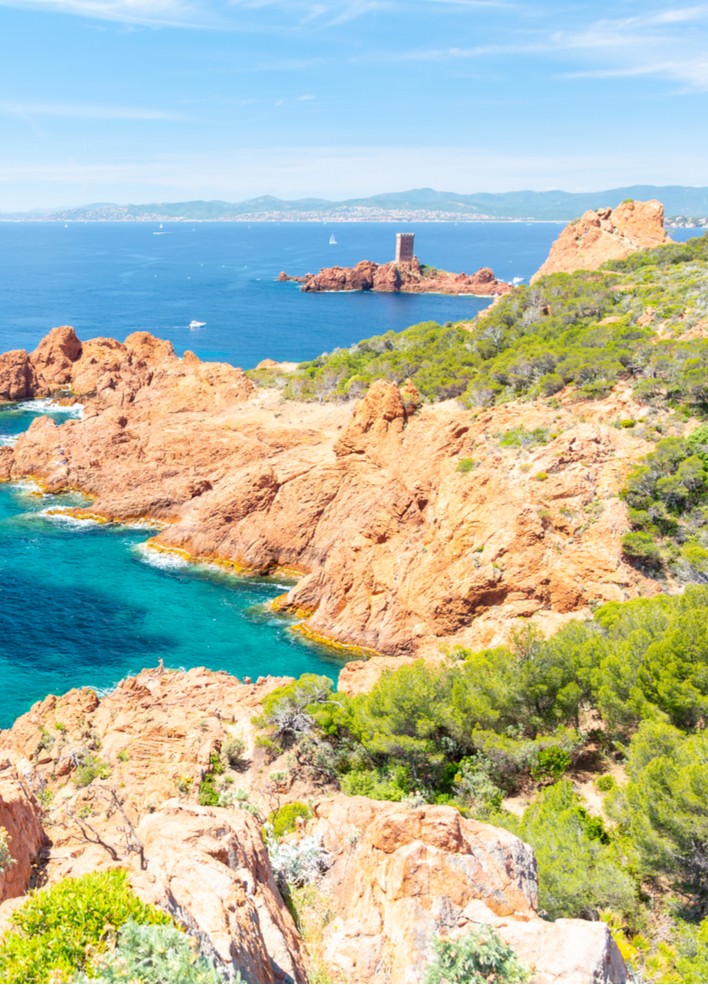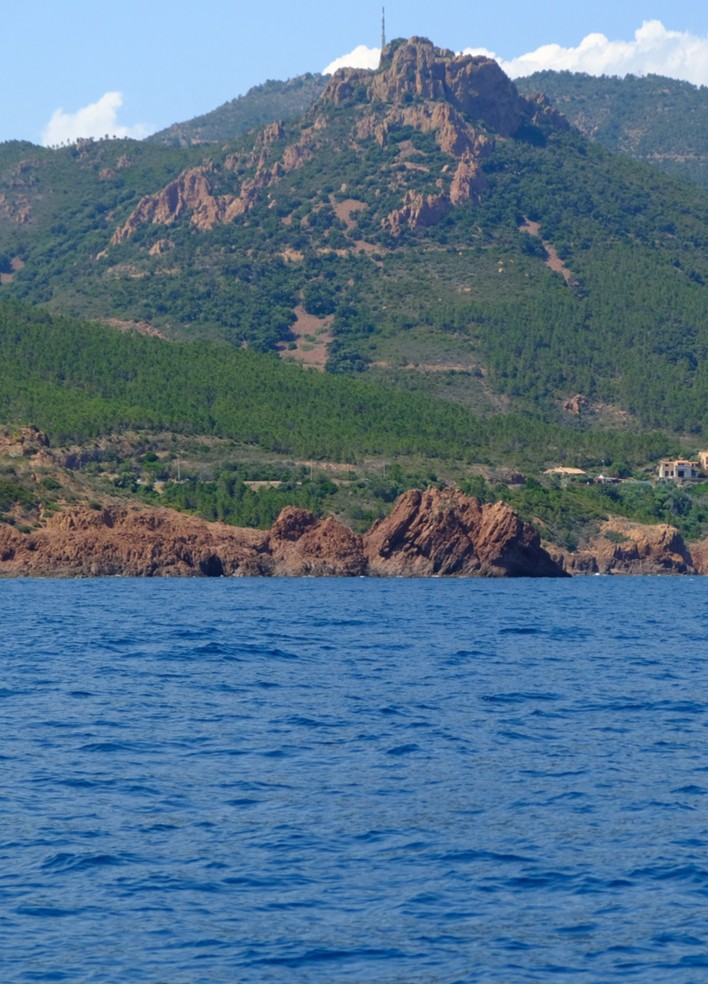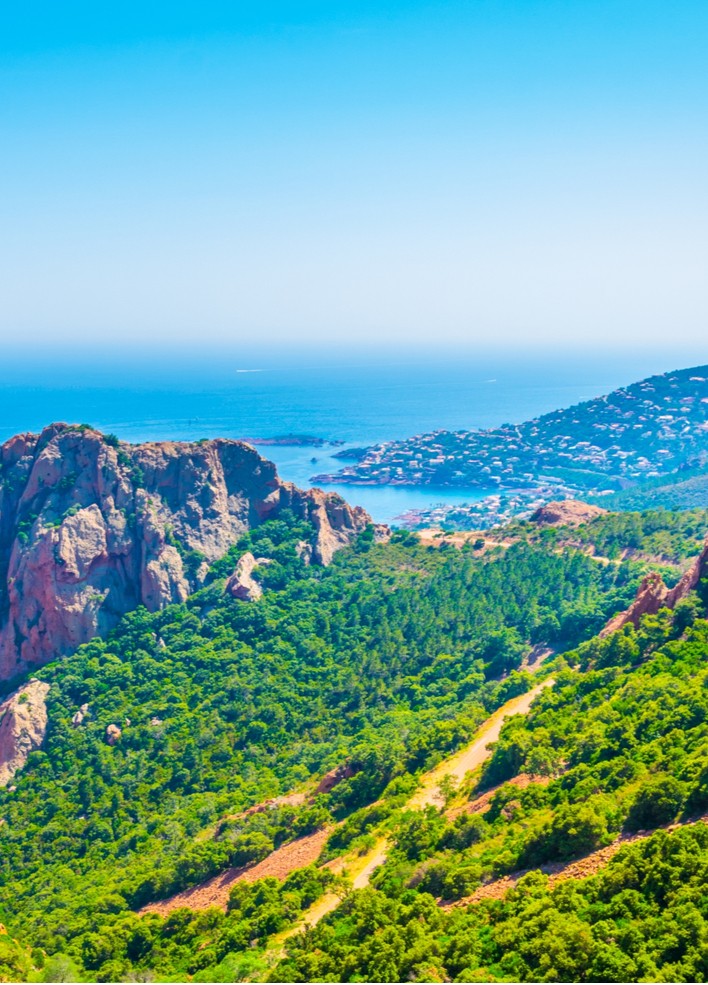Fréjus
Enjoy Fréjus, with its beautiful beaches, cozy town center with restaurants and terraces.
Beautiful local sights and attractions
Discover a selection of the most beautiful places and attractions in Fréjus
History
Around the year 50 BC. Julius Caesar founded a port on the site where Fréjus is today, and called this Forum Julii. There are still remnants of the Ro...
Read MoreClimate
Fréjus has a Mediterranean climate, with the following average temperatures per month: January 10 February 10 March 12 April 14 May 17 June 21 ...
Read More
FRÉJUS, A LOVELY PORT TOWN
Fréjus is a lovely port town on the Côte d'Azur in south-eastern France. Situated midway between Saint Tropez and Cannes, Fréjus really is a fun place to have a holiday as it has something for everyone being rich in history, culture, art and family activities.... The history of Frejus can be traced back to when it was part of the Roman city of Forum Julii that was founded by Julius Caesar in 49BC and the first Roman military port in the Mediterranean. Its position was carefully chosen as it stands on rich alluvial soils between the mountain chains of Esterel and Maures. There is a wealth of archaeological treasures from this period including an amphitheatre, theatre and aqueduct as well as the numerous contents of the Archaeological Museum! The 13th century Cathedral of Saint Léonce is part of a complex of buildings that encircled the Gothic Bishop's Palace. The Cathedral was built on the site of an older 5th century church and is interesting to visit as it has two naves of different periods that are linked by an archway. The cathedral tower is a distinctive square shape and judging by its design was built with defence in mind. Just north of the cathedral is a beautiful cloister, the Cloitre de la Cathedrale de Fréjus that also date from the 13th century. On it’s capital there are two distinct symbols; the first is the fleur de lys – badge of the king, Charles of Anjou and the second is a symbol of keys which were the emblem of the Bishop of Fréjus. If you look up at the wooden ceiling of the galleries you will see carved and painted images that were completed in the 14th century and depict mythological characters, animals and well-known personalities of the time.
Roman aqueduct
The cloister is listed as a French National Monument. The jewel in the complex is the octagonally shaped Frankish Baptistery which dates from the 5th century - making it one of the oldest Christian sites in France. The Baptistery was covered over in the 14th century and was not rediscovered until 1925. Archaeologists carefully excavated the area, uncovering a 1,600 year old marble floor and two terracotta pools - a smaller one for feet and the larger octagonal pool for when baptism meant total immersion. The granite columns that surround the Baptistery are Roman in origin. Interestingly, the entrance door into the Baptistery is very low and everyone entering is forced to bow low. The exit door is full height so that those who had been baptised could leave with their head held high! The Archaeological Museum has a fascinating collection of exhibits that give an insight into daily life in Roman times as well as their ceremonies and rituals and such things as funeral rites. There is a handsome bust of Hermes which has become the symbol of Fréjus as well as a superb mosaic of a panther. The Roman aqueduct is certainly impressive and for enthusiastic buffs there is the opportunity to follow its 40 kilometres course with plenty of archaeological evidence along the way including a bridge with water channel over the Gargalon Stream. The water was collected from the Foux and Siagnole rivers and then fed by a series of underground conduits and tall sections of aqueducts to Forum Julii. In Parc de la Villa Aurélienne four tall stone aqueduct columns stand proudly in the lawn.


Provençal lunch
Until recently, the town's marvellous Roman amphitheatre was nothing more than an impressive ruin with large parts of its seating terraces either missing or broken. The amphitheatre has been carefully restored to its former glory but as a precaution against further damage, the soft golden sandstone has been covered with a layer of cement. The amphitheatre has been carefully restored to its former glory but as a precaution against further damage, the soft golden sandstone has been covered with a layer of cement. The amphitheatre is now used for many public events and whilst it has lost its ancient character, the filled amphitheatre is as atmospheric as ever! Likewise, the smaller Roman theatre is also used during the summer months as the venue for drama and musical performances. By Medieval times, Fréjus was a thriving port and important trade centre. It also became an important centre for the French Navy and military ships still regularly drop anchor offshore. A wanderer around the town on foot soon sees it’s pretty houses painted in different pastel colours. In the heart of the town is the Place Formagé with the cathedral and the Town Hall. The Town Hall is recognisable by its pale golden colour and this building used to be the Bishop's palace. Since the 1930s, like many other towns in this sunny corner of France, Fréjus became a popular holiday resort and today has a great selection of self-catering accommodations for couples, friends and families. There is a myriad of places to enjoy coffee sitting in the warm sunshine and there are plenty of places to eat too. Don't forget to look out for the lunchtime 'Plat du Jour' set menus which are always good value for money.
Markets
L'Entrée des Artistes is one such restaurant with a typically Provençal lunchtime menu with a lovely terrace for enjoying a meal as the world goes by! The Ardent Merou and Les Palmiers are two restaurants that are really good for fish and seafood – and the Ardent caters for vegetarians too. L’Amandier and Le Bastide Clos des Roses have particularly creative and contemporary chefs that love to work with fresh local produce and herbs. For cheese fans, there is Mon Fromager, an artisan cheesemaker who also has a small restaurant where he cooks some great dishes using his cheese. If you are planning a picnic, Maison de la Tarte is perfect as there are delicious sweet tarts of every kind and these are sold by the slice. There are various quiches also sold by the slice as well. The market is held twice a week on Wednesdays and Saturdays in the centre of the town. The stalls start business at about 07.00 in the morning and are piled high with local fruit and vegetables. There are charcuterie and cheese stalls and several selling wine too. Others sell shoes, clothing and household goods and there is always plenty of bustle! On Sundays, there is a popular market held on the beach front between Fréjus and Saint- Raphael. In complete contrast to the wonderful old ecclesiastical architecture found in the town's cathedral complex, a very modern and truly beautiful chapel can be seen nestling among pine trees in the hills behind the town. Chapelle-Notre-Dame-de-Jérusalem was designed by the poet and film-maker Jean Cocteau in the 1960s. Sadly he died in 1963 before the chapel had been completed.


Massif de L'Esterel
His adopted son the actor Edouard Dermit completed the wall frescoes and mosaics according to his father's notes and sketches and the finished chapel is a very special place. The Massif de L'Esterel is a chain of mountains that run from Fréjus to Cannes and the highest summit is Mont Vinaigre (just over 600 metres). It is a comfortable 30-minute walk to follow the staidly climbing path through the maquis with its wild lavender, rosemary and numerous wild herbs to the top, but the effort is well worth it as there is a grand panoramic view of Saint Tropez, Cannes and the beautiful blue Mediterranean. In the past, this was the hideout of the Robin-Hood like local outlaw, Gaspard de Besse. Many visitors to Fréjus visit the Malpasset Dam on the outskirts of the town. The dam was built in 1952 and was left badly damaged after a bad storm seven years later when 421 people lost their lives. There is a huge breach to be seen in the dam wall and large pieces of reinforced concrete can be seen scattered across the valley floor below. It is a poignant place to visit with the clear message that nature is mightier than man. The Hông Hiên Tu Pagoda is another more unusual place to visit in the town. During the First World War, Senegalese and Vietnamese soldiers were stationed in the town whilst they waited to be deployed on the Western Front. The Buddhist Pagoda was built by Indochinese soldiers in 1917 and was much used by all the Buddhist soldiers. It fell into disrepair after the war but during the 1950s work began on restoring it. It is an impressive building, decorated with statues of Buddha, dragon and elephants and all the Buddhist festivals are commemorated there.
Beaches
After all this culture, it is definitely time to hit the beach! To the west of the town is the lovely Plage du Pacha and to the east – just before Saint-Raphâel – is Plage des Sablettes. In between, there is a lovely sandy beach with shallow water called Nature François Léotard that has a car park really close by and facilities, making it perfect for families with young children, the elderly and visitors with special needs. Another fun place for the family is Aqualand which has 18 different slides and pools including the award-winning King Cobra which is perfect for teenagers. Fréjus is a popular place to stay all year through as the winter is both mild and short-lived. There are a variety of events to enjoy too including the April Flower Festival in Aurélienne Park, the International Festival of Petanque in June and the Theatre Festival in July. There is a colourful night market down by the beach every evening in July and August and there are nightly firework displays too. As summer turns to Autumn, a popular event is the Festival International de l’Air (International Air Festival) held in October and in December, there is a fun Christmas market to enjoy too. If you are looking for a holiday that is rich in culture, with great food, wine and beaches for relaxing....look no further than Fréjus...




 EN
EN  NL
NL
 DE
DE
 FR
FR
